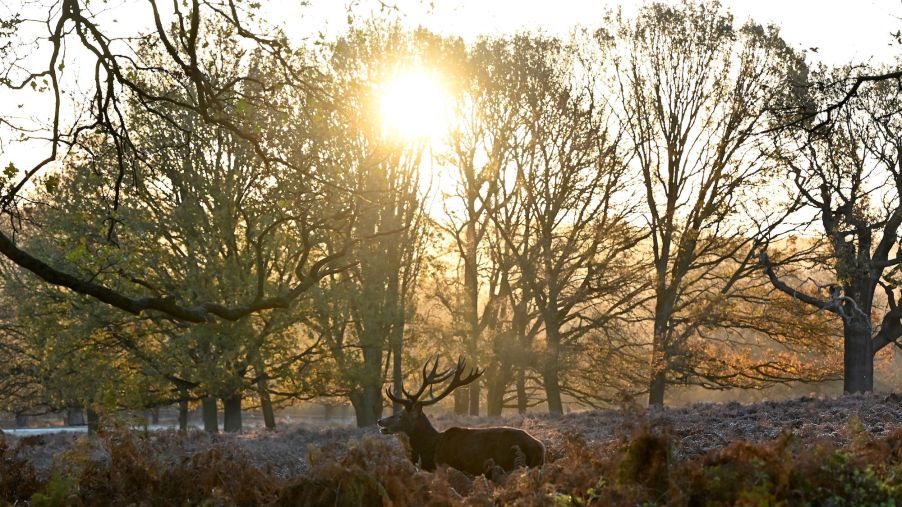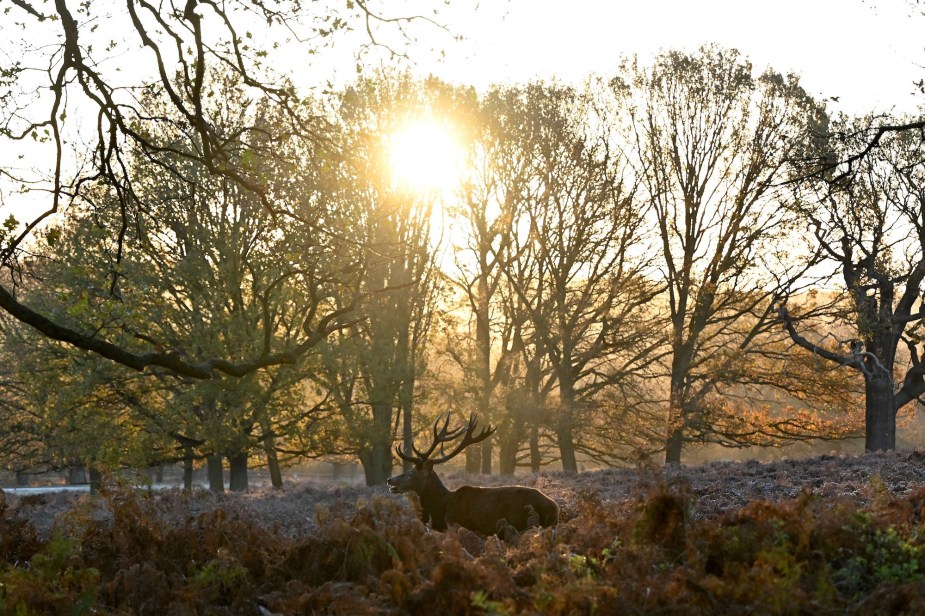
Drivers Beware: Are Deer More Active at Sunrise or Sunset?
You’re cruising down a country road at dawn, enjoying the sun rising over the trees. Suddenly, a deer rushes out in front of your car and it collides into it. So, was the sunrise what drew out the deer? How can you prevent it the next time you’re driving in a rural area during twilight hours?
Are deer more active at sunrise or sunset?

Erie Insurance debunked a few myths regarding deer on the road, but they agree that deer are most often found on the road during twilight hours. Like cows and goats, deer regurgitate and chew their cud to get the maximum nutrition from it. They prefer chewing their cud while resting during the heat of the day. They may be most active at sunrise because it’s breakfast time for them, and they have to eat before they have a cud to chew later.
When avoiding deer it is always important to remember deer crossing signs were put there for a reason. They indicate that there are large numbers of deer in the area and a history of car crashes involving them. It’s important to slow down and pay special attention to the road’s verges because that’s where the deer will come from. Practice extra caution during the twilight hours when deer are the most active.
If you see one deer on or near the road, look for more. Deer are herd animals and rarely travel alone. You could miss one deer and hit another while you’re still breathing a sigh of relief.
The dangers of hitting a deer
After hitting a deer you could find yourself in a dangerous situation. The deer or the act of the accident itself could potential cause substantial injury. In fact, Drive-Safely reports that roughly 10,000 people a year need emergency medical treatment after they’re involved in a car accident caused by a deer.
Many people are injured not just because of the deer but also because they swerved around the animal and collided with a stationary object or another vehicle. Swerving to avoid an accident often ends up causing an even worse accident. Don’t hit your horn or slam on the brakes, either. Actions like that can either cause the deer to freeze in front of you or startle it into someone else’s traffic lane.
According to Virily, a head-on collision involving a deer and a car going 70 mph generates almost 101,544 foot-pounds of force. It would only take around 2,950 foot-pounds to break your leg bone. That means the accident would create almost 35 times as much force as needed to break close to every bone in your body.
It’s not good for your car when you hit a deer
Erie Insurance reports that deer cause almost $1 billion in damage to vehicles yearly and that National Highway Traffic Safety Administration (NHTSA) statistics report 1.5 million accidents involving the animals yearly.
The force generated by hitting a deer is sometimes enough to shove the engine into the vehicle’s cabin. It will do serious damage to whatever part of the vehicle collides with it. Fortunately, most comprehensive car insurance policies consider colliding with a deer an “unavoidable accident” due to the animal’s highly unpredictable behavior and the number of crashes they cause each year.


